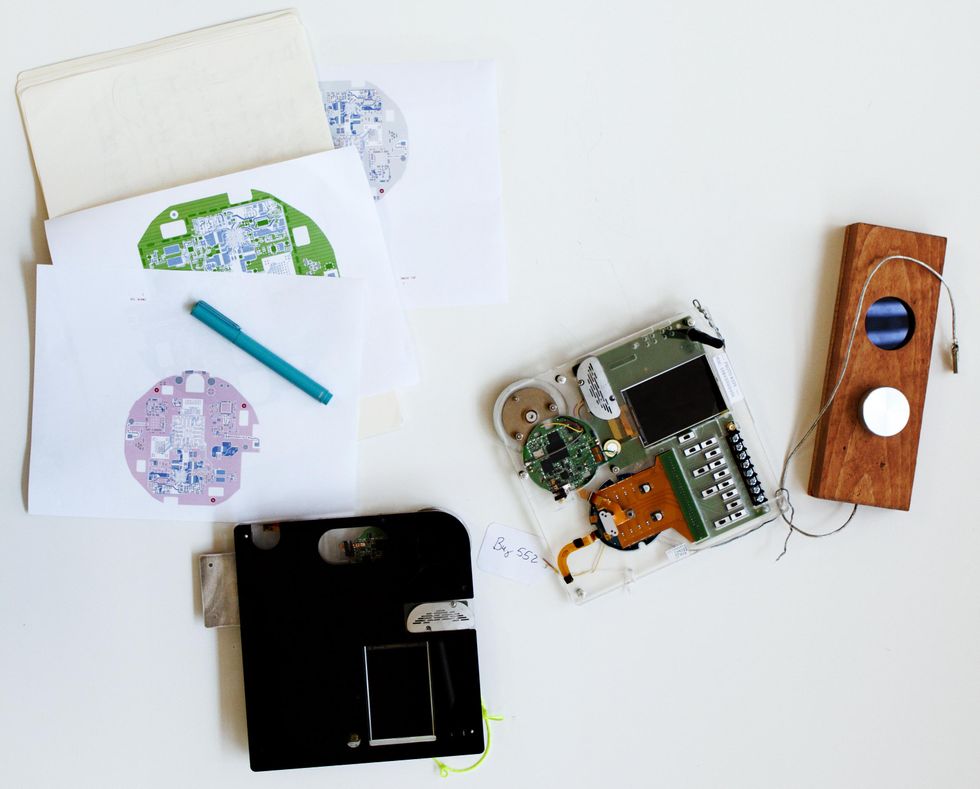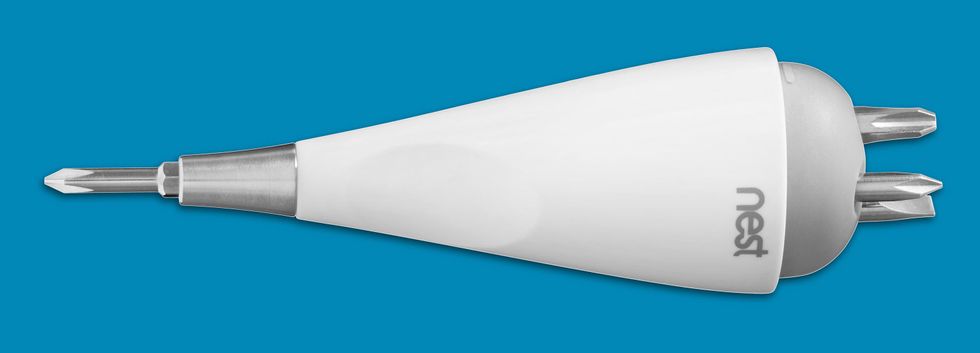[ad_1]
The thermostat chased me for 10 decades.
That is quite serious, by the way. If you’ve received an thought for a business or a new item, you normally really don’t have to wait around a decade to make absolutely sure it is value performing.
For most of the 10 many years that I idly considered about thermostats, I experienced no intention of creating one particular. It was the early 2000s, and I was at Apple creating the initially Apple iphone. I received married, had kids. I was busy.
But then once more, I was also definitely cold. Bone-chillingly cold.
Each and every time my wife and I drove up to our Lake Tahoe ski cabin on Friday nights right after work, we’d have to hold our snow jackets on right until the up coming day. The residence took all night to heat up.
Strolling into that frigid property drove me nuts. It was thoughts-boggling that there was not a way to heat it up ahead of we received there. I invested dozens of hours and thousands of bucks hoping to hack safety and pc devices tied to an analog cell phone so I could fire up the thermostat remotely. Half my vacations ended up spent elbow-deep in wiring, electronics littering the floor. But almost nothing labored. So the initial night of each and every vacation was often the identical: We’d huddle on the ice block of a bed, under the freezing sheets, seeing our breath transform into fog right up until the household lastly warmed up by early morning.
Then on Monday I’d go again to Apple and operate on the initially Iphone. Sooner or later I realized I was generating a perfect remote regulate for a thermostat. If I could just hook up the HVAC technique to my Apple iphone, I could manage it from anyplace. But the technology that I necessary to make it happen—reliable small-value communications, cheap screens and processors—didn’t exist nevertheless.
How did these unattractive, piece-of-crap thermostats expense nearly as substantially as Apple’s most slicing-edge technological know-how?
A yr later we resolved to create a new, superefficient household in Tahoe. All through the working day I’d function on the Apple iphone, then I’d come house and pore above specs for our household, deciding on finishes and elements and solar panels and, finally, tackling the HVAC process. And at the time yet again, the thermostat arrived to haunt me. All the major-of-the-line thermostats have been hideous beige containers with bizarrely confusing user interfaces. None of them saved strength. None could be controlled remotely. And they price tag close to US $400. The Apple iphone, in the meantime, was marketing for $499.
How did these unsightly, piece-of-crap thermostats cost pretty much as substantially as Apple’s most slicing-edge technology?
The architects and engineers on the Tahoe undertaking heard me complaining around and more than about how insane it was. I instructed them, “One day, I’m likely to correct this—mark my text!” They all rolled their eyes—there goes Tony complaining once again!
At initial they were being just idle words born of aggravation. But then issues started off to improve. The results of the Apple iphone drove down charges for the refined components I couldn’t get my palms on earlier. Abruptly substantial-high-quality connectors and screens and processors have been currently being made by the tens of millions, cheaply, and could be repurposed for other technology.
My life was switching, far too. I stop Apple and began touring the planet with my relatives. A startup was not the plan. The system was a split. A extensive a person.
We traveled all in excess of the world and labored challenging not to feel about work. But no subject where by we went, we could not escape one thing: the goddamn thermostat. The infuriating, inaccurate, power-hogging, thoughtlessly stupid, unattainable-to-software, generally-way too-very hot-or-also-chilly-in-some-portion-of-the-property thermostat.
Someone required to repair it. And at some point I recognized that somebody was likely to be me.

This 2010 prototype of the Nest thermostat wasn’t really. But earning the thermometer wonderful would be the straightforward component. The circuit board diagrams point to the next step—making it spherical.Tom Crabtree
The major businesses weren’t heading to do it. Honeywell and the other white-box opponents hadn’t truly innovated in 30 decades. It was a lifeless, unloved current market with much less than $1 billion in whole once-a-year product sales in the United States.
The only matter missing was the will to just take the plunge. I was not prepared to carry a further startup on my back. Not then. Not by yourself.
Then, magically, Matt Rogers, who’d been a person of the very first interns on the iPod job, attained out to me. He was a genuine companion who could share the load. So I permit the idea catch me. I arrived back to Silicon Valley and received to do the job. I researched the technologies, then the possibility, the enterprise, the competitiveness, the people today, the financing, the background.
Making it gorgeous wasn’t heading to be challenging. Attractive hardware, an intuitive interface—that we could do. We’d honed individuals skills at Apple. But to make this product or service successful—and meaningful—we necessary to fix two major issues:
It wanted to help you save energy.
And we necessary to sell it.
In North The us and Europe, thermostats handle 50 % a home’s vitality bill—something like $2,500 a 12 months. Every single former endeavor to reduce that number—by thermostat makers, by power organizations, by govt bodies—had unsuccessful miserably for a host of diverse factors. We experienced to do it for genuine, whilst keeping it lifeless simple for prospects.
Then we wanted to sell it. Virtually all thermostats at that issue ended up offered and mounted by experienced HVAC experts. We ended up never likely to crack into that old boys’ club. We had to come across a way into people’s minds first, then their homes. And we had to make our thermostat so quick to put in that virtually everyone could do it by themselves.
It took all over 9 to 12 months of building prototypes and interactive products, making bits of software package, talking to end users and experts, and testing it with close friends prior to Matt and I determined to pitch buyers.
“Real People” Take a look at the Nest
Once we experienced prototypes of the thermostat, we despatched it out to true folks to test.
It was fatter than we desired. The display wasn’t quite what I imagined. Variety of like the to start with iPod, essentially. But it labored. It linked to your cellphone. It discovered what temperatures you favored. It turned by itself down when no person was residence. It saved strength. We knew self-installation was perhaps a large stumbling block, so everybody waited with bated breath to see how it went. Did individuals shock themselves? Start out a hearth? Abandon the project midway by simply because it was far too complex? Before long our testers reported in: Set up went fantastic. People beloved it. But it took about an hour to set up. Crap. An hour was way much too long. This desired to be an effortless Diy project, a brief update.
So we dug into the reports—what was taking so lengthy? What had been we missing?
Our testers…invested the to start with 30 minutes on the lookout for equipment.
Turns out we weren’t lacking anything—but our testers were. They used the initial 30 minutes looking for tools—the wire stripper, the flathead screwdriver no, hold out, we have to have a Phillips. Where by did I put that?
At the time they collected everything they needed, the relaxation of the set up flew by. Twenty, 30 minutes tops.
I suspect most providers would have sighed with aid. The genuine set up took 20 minutes, so that is what they’d notify clients. Wonderful. Difficulty solved.
But this was heading to be the to start with instant people interacted with our gadget. Their initial encounter of Nest. They were being shopping for a $249 thermostat—they have been expecting a various type of expertise. And we required to exceed their anticipations. Each moment from opening the box to looking at the recommendations to getting it on their wall to turning on the warmth for the initially time had to be unbelievably easy. A buttery, heat, joyful expertise.
And we realized Beth. Beth was 1 of two potential consumers we defined. The other customer was into engineering, beloved his Iphone, was usually hunting for interesting new devices. Beth was the decider—she dictated what built it into the house and what bought returned. She liked beautiful factors, far too, but was skeptical of supernew, untested technological know-how. Searching for a screwdriver in the kitchen drawer and then the toolbox in the garage would not make her sense warm and buttery. She would be rolling her eyes. She would be annoyed and annoyed.

Shipping and delivery the Nest thermostat with a screwdriver “turned a minute of frustration into a moment of delight”Dwight Eschliman
So we improved the prototype. Not the thermostat prototype—the installation prototype. We additional a person new aspect: a tiny screwdriver. It experienced four unique head possibilities, and it match in the palm of your hand. It was smooth and sweet. Most importantly, it was unbelievably handy.
So now, instead of rummaging through toolboxes and cupboards, seeking to obtain the correct instrument to pry their previous thermostat off the wall, buyers only arrived at into the Nest box and took out particularly what they wanted. It turned a minute of stress into a moment of delight.
Honeywell Laughs
Sony laughed at the iPod. Nokia laughed at the Iphone. Honeywell laughed at the Nest Learning Thermostat.
At initial.
In the phases of grief, this is what we connect with Denial.
But quickly, as your disruptive products, method, or business enterprise design commences to get steam with prospects, your opponents will start to get worried. And when they notice you could steal their market share, they’ll get pissed. Really pissed. When individuals strike the Anger phase of grief, they lash out, they undercut your pricing, test to embarrass you with advertising and marketing, use negative push to undermine you, set in new agreements with revenue channels to lock you out of the market.
And they may well sue you.
The excellent news is that a lawsuit indicates you’ve formally arrived. We experienced a bash the working day Honeywell sued Nest. We ended up thrilled. That ridiculous lawsuit intended we had been a authentic menace and they realized it. So we brought out the champagne. That is suitable, f—ers. We’re coming for your lunch.
Nest Receives Googled
With each individual era, the item grew to become sleeker, slimmer, and significantly less high-priced to make. In 2014, Google bought Nest for $3.2 billion. In 2016 Google decided to market Nest, so I left the company. Months just after I remaining, Google modified its head. Currently, Google Nest is alive and effectively, and they are nonetheless earning new solutions, producing new encounters, offering on their version of our eyesight. I deeply, genuinely, would like them effectively.
From Your Site Content
Connected Content articles All-around the Web
[ad_2]
Source link